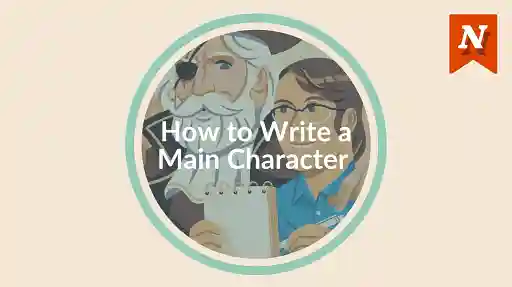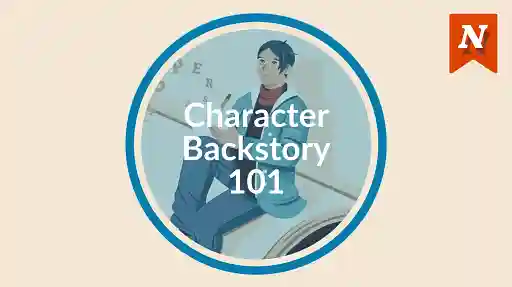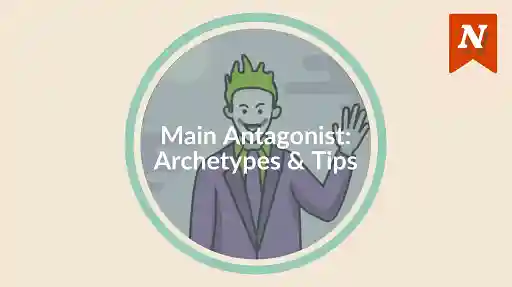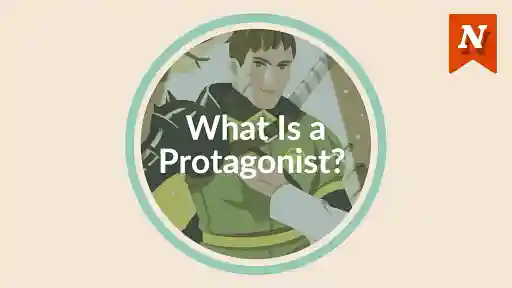Character flaws serve multiple purposes. Often, they're the faults and shortcomings that create conflict between key players in a story. Yet flaws are also useful for creating attraction between characters. Without them, characters feel wooden, 'too perfect'. Without them, attraction might seem too instant. Here are types of flaws that make characters interesting:
1. Physical character flaws
'Flaw' is a strong word to describe a character's appearance. Body-shaming is rife in popular culture. People don't necessarily share the notion that one physical trait is 'objectively' more beautiful/desirable than another.
However you feel about norms of beauty in society, the truth is that cultural ideals (and pressures people place on each other and themselves because of them) do exist. So how can you make physical character 'flaws' - how they differ from the norm - part of what makes them lovable?
1. Give characters positive attitudes to their physical 'flaws'
A person's attitude to their own flaws may can modify their attractiveness. For example, a character might have 'curves and swerves'; a voluptuous figure. Yet despite body shaming, they might carry their weight confidently. Or a skinny character has an irrepressible attractiveness despite hearing or thinking they look emaciated.
Many find a positive attitude attractive. You could also make your character's attitude to physical 'flaws' reflect other positive qualities. Perhaps they're funny about their features, for example.
2. Find beauty in the eye of the beholder
The common phrase 'beauty's in the eye of the beholder' reminds us that attraction is often highly subjective. One character might joke with another, saying, 'What do you call a potential boyfriend shorter than six foot? A friend' The friend, on the other hand, might have a strong attraction to shorter men.
Often someone's 'flaws' - a mole, some or other detail - is also what gives them their 'them-ness'. It's the distinctive detail that another character associates with them. It represents them in the other's mind's eye.
When writing romance between characters, think about physical details a character might dislike about their own appearance. There could be a 'too much' or 'too little' that a lover wouldn't have any other way.

2. Emotional or personality flaws
Emotional character flaws can be both the source of initial attraction and the ultimate cause of conflict. Conflict between characters adds extra suspense and tension.
Here are some emotional qualities other characters could see as flaws. First, consider how these character qualities could come across as positive to begin. Then see how the same qualities might appear negative in time:
Character Flaw: Neediness.
Initially seems sign of: Desire for the other, emotional openness, paying attention.
Negative side: Suffocation, lack of space, imbalanced co-dependence.
Character Flaw: Narcissism.
Initially seems sign of: Confidence, strength, decisiveness.
Negative side: Self-focus, lack of empathy, arrogance.
Character Flaw: Shyness.
Initially seems sign of: Humility, endearing vulnerability, sensitivity.
Negative side: Lack of self-love, passivity, weakness.
Character Flaw: Need for control.
Initially seems sign of: 'Take charge' reliability, discipline, focus.
Negative side: Dominating, punishing, demanding.
We could go on, but the basic principle is there. The imbalances in people are often the things that attract and repel others.
This push and pull between finding emotional flaws or imbalances attractive and frustrating makes relationships interesting. The character who 'chivalrously' holds the door for the other could easily become irritating in their determination to hold up gender 'roles' or traditions.
These double-edged character qualities are especially useful when you want to show how characters pass from hating to loving each other (and vice versa). An extrovert character who finds another's shyness off-putting, for example, might find themselves getting drawn more and more to their quiet or gentle quality.

3. Ideological character flaws
The Oxford Dictionary defines 'ideology' as 'A system of ideas and ideals, especially one which forms the basis of economic or political theory and policy.'
For example, 'conservatism' (holding traditionalist or nationalist views such as being anti-immigration) is an ideology. 'Liberalism' (e.g. pro-immigration or pro-choice views) is another.
Whatever your own ideological stance - the set of beliefs and values you hold dear - remember a character's ideology can be a flaw and a source of attraction to others.
Let's consider an example: A woman in her twenties meets a charming man at a bar. He's intelligent and entertaining. But there's a key difference in their ideologies. He's a complete Democrat and she's a staunch Republican.
These political differences are both flaws to each character, from where they're sitting. They could be attractive flaws. Maybe the young woman is from a very Republican home. It's exciting, the idea of ruffling feathers and bringing a non-conservative date to her family. Perhaps she wants to rebel, or is doubting her views.
Maybe the man in the bar thinks his super-liberal family should be more tolerant of conservative outlooks. People are capable of holding conflicting viewpoints and acting against their core beliefs.
Characters thus might find each other's ideologies intriguing (or good fodder for jabs and jokes), at first. Yet the reality of these views would likely create conflict, too, in time.
Like emotional character flaws, ideological flaws may be sources of attraction and repulsion.
Tips for using different types of character flaws better
Now that we've discussed three types of character flaw, here are tips to use them well in your story [you can also brainstorm characters in the Now Novel dashboard process]:
1. Explain your character's flaws
Whatever your characters' flaws, explain them. While characters might be born with unusual physical features, their emotional and ideological flaws could stem from:
- Traumatic backstory: Is there something in a character's past that led them to hold a certain negative view or have a specific personality trait?
- Conditioning: Have authority figures such as parents or teachers instilled values in your character that others might consider flaws?
- Flawed logic: Sometimes characters make questionable deductions based on prior views and experiences. E.g. an experience with a person of a specific description leads someone to believe falsely that all similar people in that category (sex/ethnicity/nationality) are the same. This is the flawed logic of prejudice.
2. Make the flaw fit the character
Make the flaw seem reasonable to your character. It's often said that villains don't think of themselves as villains. To a villain, their flaws (greed, dishonesty) could easily seem like strengths (ambition, cunning). Think of flaws that make sense for characters' goals - what they want to achieve - and the personality traits that tend to go with those goals.
3. Find additional character flaws as you draft
Flaws for your characters may be something that you plan ahead of time. It's even more likely that they will reveal themselves along the way as you write. Try to think of each character, even the worst villain, through their own eyes. Having an empathic eye for humanity in general will help you create flawed, realistic and lovable characters.
Need help writing better characters? Get How to Write Real Characters, our workbook including exercises for making your characters vivid and distinctive.









What's the name's artist of that painting?
Cedraz Aleluia - Almost 8 years ago
The Chinese say "no coincidence, no story." I would add: no flaws, no character.
Elias Mc Clellan - About 7 years ago
Great saying. Thanks for sharing that, Elias.
Bridget At Now Novel - About 7 years ago
"Fatshaming"? it's used by fat acceptance feminists. Remove it and/or replace it with "bodyshaming".
Nameless Person - About 7 years ago
The two words are used in an almost synonymous way (e.g. here http://www.bullyingstatistics.org/content/fat-shaming-and-body-shaming.html) but you're right that's the better term. Thanks for weighing in!
Bridget At Now Novel - Over 6 years ago
Narcissism Is not a flaw. It's a serious mental disorder, that's actually very rare. Gosh, you're so ignorant it hurts!
Mary - Almost 4 years ago
Hi Mary, thank you for your feedback (your comment has been edited for profanity). Something being a serious mental disorder does not mutually exclude it being a 'character flaw' from a story perspective, in the sense that it is a potential drawback that can negatively impact said character (for example, by precluding collaboration; dialogue; conflict resolution, etc.) For example, a presidential candidate's narcissism could turn a swathe of voters off them, costing them an election (to use a hypothetical example). This is a 'flaw' in the sense they have an innate characteristic that has worked to counter their own desires/ambitions/goals. To be more specific, 'Narcissistic Personality Disorder' (a serious disorder) is not the same thing as narcissism as a personality trait that most people demonstrate over time; this article was not a discussion of NPD. I would advise refraining from ad hominem in giving your POV in discussion as it greatly weakens an argument. Thank you for reading our blog.
Jordan - Almost 4 years ago
I agree with Jordan's reply to Mary. Narcissistic traits are on a continuum, mild to severe. Narcissistic personality disorder is when the problem is severe enough to cause ongoing significant problems to the individual and others with whom they interact. It can be very severe. Many of us have mild narcissistic traits that make life slightly rougher.
Geraldine Powell - Over 3 years ago
Hi Geraldine, thank you for sharing your thoughts on the subject and for reading our blog. It's true that many characteristics lie on a continuum. Also that to have a character who suffers from any trait being out of balance is not necessarily an attack on those who have similar traits; it depends on whether the author handles the material compassionately or not.
Jordan - Over 3 years ago